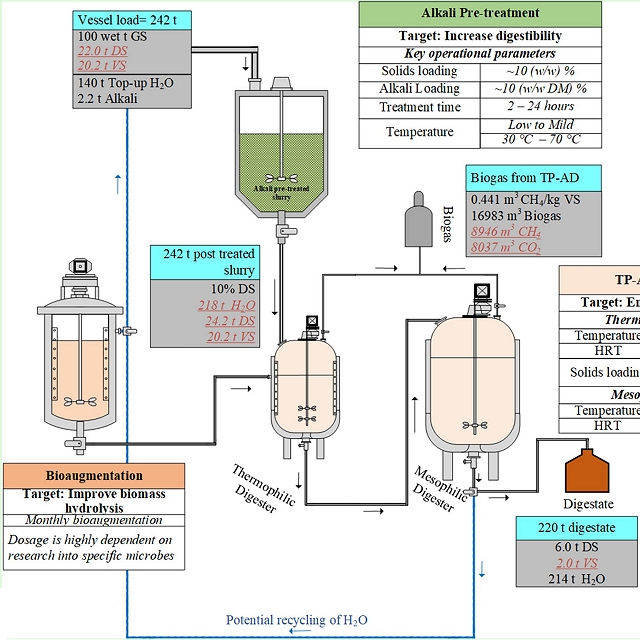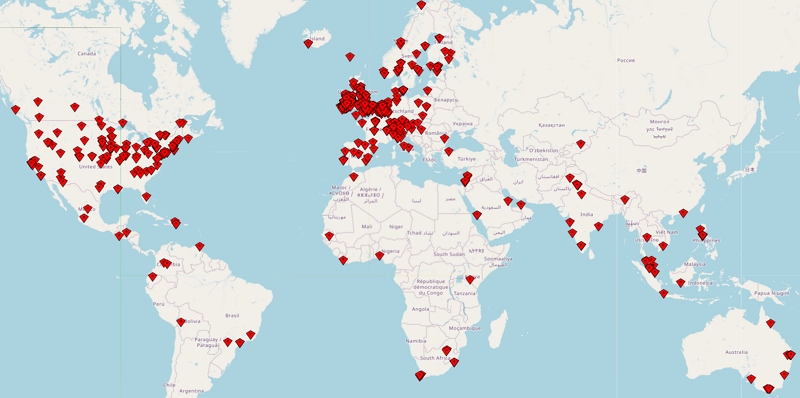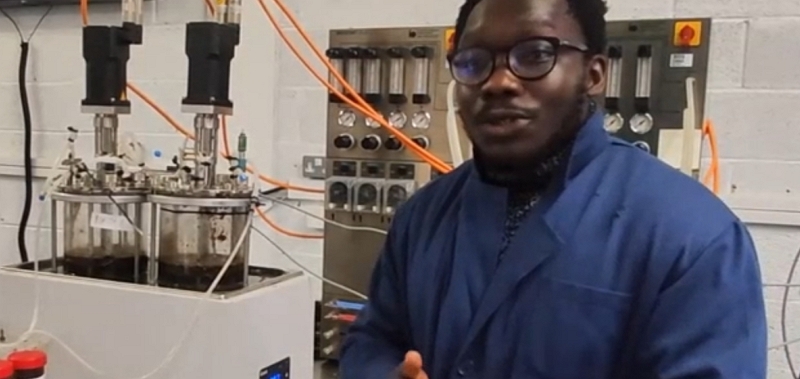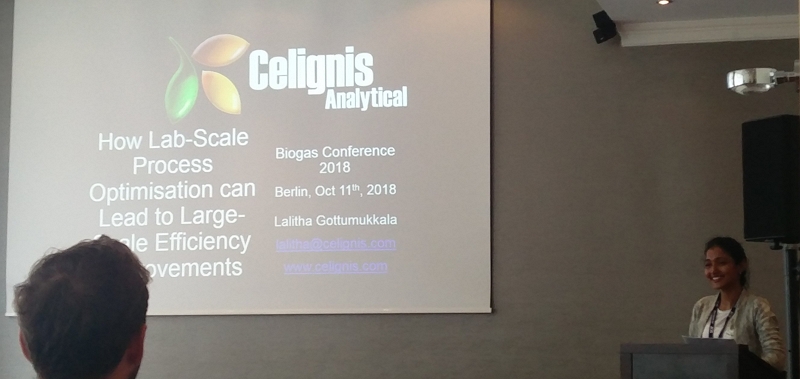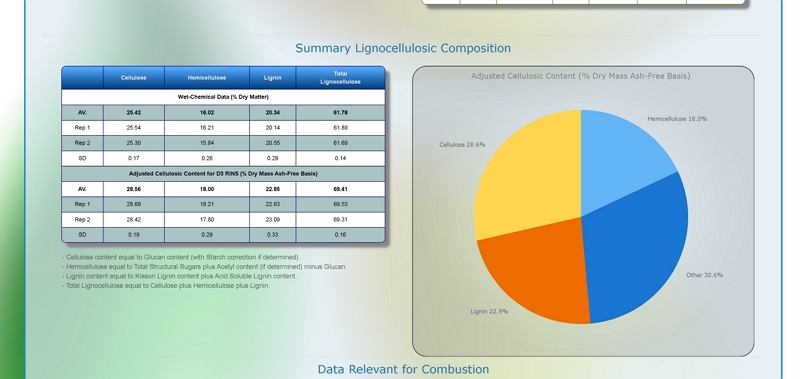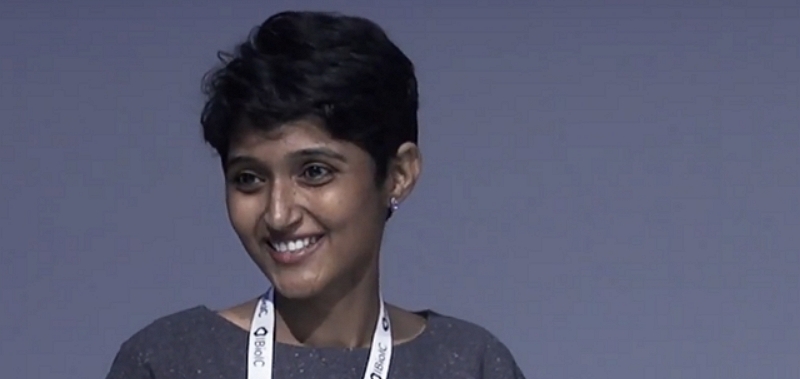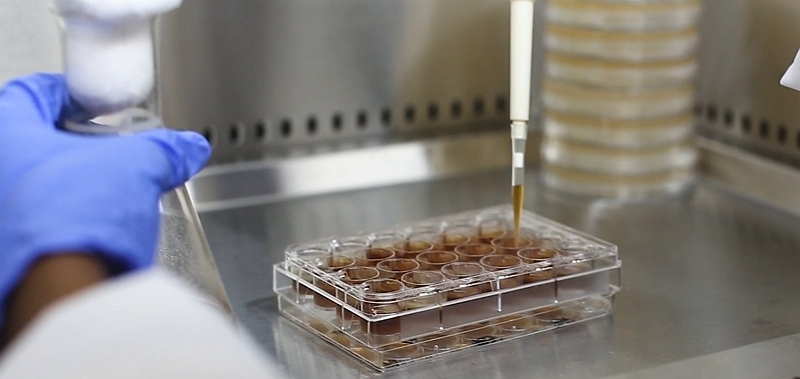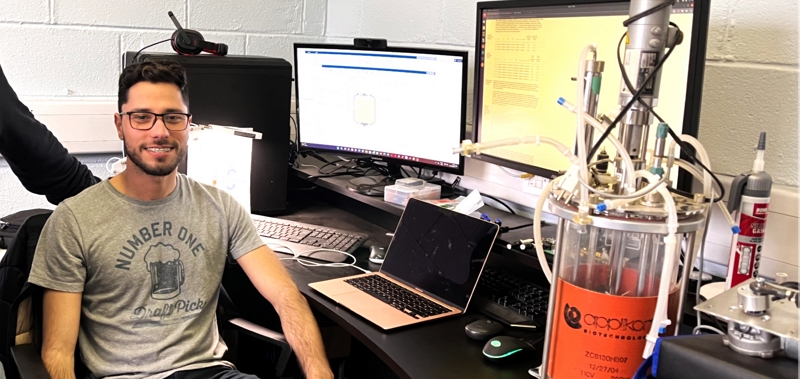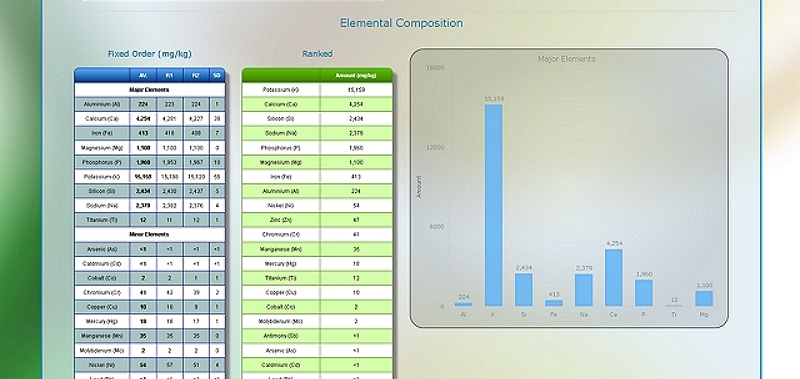Technoeconomic Analyses
The rigorous simulation provides reliable mass and energy balance data which constitutes the foundation for equipment design, sizing and specification and utility demand estimations.
A thorough techno-economic evaluation (TEA) provides more clarity which guides decision making especially in the case of a significant financial commitment like the establishment of a commercial production facility.
Considering the low TRL of many emerging and developed bioprocess technologies, TEA stands as a valuable tool to investigate the promising potentials of these technologies in a more detailed design on a large scale before any major financial commitment is made. Our team of TEA experts are well equipped to evaluate the scale up and economic potential of various feedstock conversion technologies and product systems to provide clients and stakeholders with the vital data necessary to inform their decision making and resource allocation in respect of a technology or product of interest.
Oscar has also good experience in the development of advanced and detailed conceptual process flow diagrams from the lab-scale process, highlighting scale up challenges and the process and engineering requirements for very unit operation in the process flow. With his proficient understanding of biological, chemical and physical systems, he has developed process simulations for several biorefinery scenarios using the appropriate modelling software. These simulations closely mimic the real life manifestation of the industrial process which is beneficial for R and D, mass and energy balance, equipment design and operation of the process or industrial plant. The simulation development significantly cuts down on unnecessary laboratory experiments, pilot scale runs and facilitates design by a convenient comparison of various process alternatives.
With her biological expertise together with process engineering knowledge, she ensures that assumptions made in the simulations are meeting the real plant scenarios considering the limitations associated with bacterial and fungal systems such as product feedback inhibitions and substrate inhibitions. She is adept at developing multi-product processes from single feedstock or mix of feedstock and believes in AD not just for biogas, but AD for local decentralized biorefineries.
Celignis performed the required biological and chemical analysis of the facility's waste streams and developed a spreadsheet tool for feedstock mixtures design to allow the conversion of the sugar and acid rich waste stream to biogas and to meet the energy requirements of the company.
Greenhouse gas (GHG) emission reductions and carbon dioxide that could be captured and the total revenue generation from biogas and CO2 were also estimated. The tool allowed the company to make informed decisions on the project and understand the biogas potential and feedstock requirements to meet the target power requirement.

Lalitha Gottumukkala
Founder and Lead of Celignis AD, CIO of Celignis
PhD
<p style="text-align: left;">Has a deep understanding of all biological and chemical aspects of anaerobic digestion. Has developed Celignis into a renowned provider of AD services to a global network of clients.</p>

Oscar Bedzo
Technoeconomic Analysis Lead
PhD
<p style="text-align: left;">A dynamic, purpose-driven chemical engineer with expertise in bioprocess development, process design, simulation and techno-economic analysis over several years in the bioeconomy sector.</p>
Seaweed, an abundant third-generation biomass, has garnered significant interest for hydrocolloid extraction due to its unique composition. The extraction of these hydrocolloids, coupled with the negligible presence of lignin, leaves behind a cellulose-rich residue ideal for nanocellulose production—a potential that remains underexplored. Nanocellulose, known for its versatility, finds applications across composite, fibre, and medical industries. This review delves into the structure, composition, and extraction processes of seaweed hydrocolloids. It also investigates green emerging pretreatment techniques for hydrocolloid extraction, evaluating their advantages and limitations. This review further analyses nanocellulose produced from seaweed residues, focusing on treatment types, morphology, thermal stability, and crystallinity to determine optimal applications. Lastly, a comprehensive biorefinery approach is proposed, integrating hydrocolloid extraction and nanocellulose production to maximize the benefits from the seaweed industry. | |
The production of high-value commodities from sugarcane bagasse and harvest residues could be integrated into existing sugarcane mills to create sugarcane biorefineries. Three distinctly different domains of operating conditions were optimised for autocatalyzed steam pretreatment and enzymatic hydrolysis of these lignocelluloses, to provide sugars according to biorefinery priorities, i.e. (i) maximum digestibility of the solids for glucose only, (ii) maximum hemicellulose recovery in the prehydrolysate for xylose only, or (iii) maximum combined sugar yield (CSY; glucose plus xylose). Bagasse pretreatment showed isolated optima for each response at (i) 215 °C, 15 min; (ii) 202.2 °C, 5 min; and (iii) 215 °C, 5 min. For the harvest residues, the three domains of optimum conditions overlapped within temperatures of 198 and 200 °C, and times of 8 and 12°min, allowing for a single pretreatment condition that meets all three criteria. The practicality and robustness of the preferred pretreatment conditions were demonstrated with a mixed stream of both feedstocks. | |
The nature of a sweet sorghum cultivar influences the recovery of sugars from the bagasse during pretreatment. The sugars recovered are used in applications for conversion to high-value products such as alcohols, organic acids, and other fuels and chemicals. The severity of the pretreatment used plays a crucial role in the yield and quality of the sugars that can be recovered. Therefore, a strategic approach was taken to lower the severity of the pretreatment process to a combined severity factor (CSF) value of 0.48, whilst maintaining a high level of total-sugar recovery (i.e. 68% (w/w) and higher). This was achieved by screening 23 sweet sorghum cultivars for high-performance characteristics at low-severity conditions and optimizing the pretreatment process conditions. The pretreatment conditions included time, temperature, and acid concentration ranges of 5 to 60 min, 150 to 210 oC, and 0.00–0.96% (w/w) H2SO4, respectively. Cultivar AP6 was identified as the best performer, producing the highest total sugar yield of 78.17%. A reduction in total by-product formation from 4.79 to 2.79 g/100 g biomass was also observed. Three preferred cultivars selected for pilot scale pretreatment using steam explosion resulted in maximum total sugar recoveries that exceeded 80% (w/w). Cultivar selection provides an opportunity to utilize sweet sorghum bagasse that will liberate sugars at desired yields while reducing the generation of by-products by implementing low severity pretreatments. | |
Brewers spent grains (BSGs) represent the largest quantity of solid waste from brewing, while xylooligosaccharides (XOS) produced from BSG show promising applications in food, beverage and health products. Production of XOS from a Weiss and malt BSG was scaled-up in steam explosion hydrothermal treatment using process conditions from bench-scale liquid hot water optimisations in stirred batch reactors. Three levels of moisture (15, 25 and 32% dry matter) achieved by screw press dewatering were evaluated by varying the treatment temperatures and times. Results show the highest XOS yields (73.1%) were obtained, for both BSGs, at process condition selected (180 C, 10 min) with 25% initial dry matter content. These yields were higher than reported bench-scale optimisations (61%), but obtained using 60% less water; hence, initial dry matter content was an important variable affecting XOS yield. The pilot-scale steam explosion results provide a departing point for a cost-effective commercial production of XOS from BSG. | |
A techno-economic assessment (TEA) of enzymatic hydrolyses of a municipal solid waste (MSW)-derived pulp was performed to compare various bioprocessing configurations for the production of platform sugars at both pilot and demonstration scales (two-stage continuous, batch, and two-stage fed-batch). The configurations modeled used either rotary drum and/or continuous stirred tank reactors. By using reaction kinetics and public vendor's quotes, economic analyses were calculated for each of the proposed systems: capital expenditure (CapEx); operation expenditure (OpEx); revenue and profit; return on investment (ROI); and payback period (PP). The TEA showed that a two-stage continuous configuration with a total residence time of 54 h (6 and 48 h for primary and secondary stages) was the best option for obtaining sugars, showing sevenfold higher enzyme productivity and better profit than the reference systems. Although pilot-scale enzymatic hydrolysis demonstrated an unprofitable process, this was mainly due to the high associated enzyme cost. Increasing the scale diminished this problem, leading to higher profit per processed unit (GBP/kg lignocellulosic sugars). From an investment perspective, the two-stage 6/48 configuration gave a more attractive ROI and PP than the other designs. | |
Commercial production of inulooligosaccharides (IOS) relies largely on chicory roots. However, Jerusalem artichoke (JA) tubers provide a suitable alternative due to their high inulin content and low cultivation requirements. In this study, three inulin-rich substrate preparations from JA were investigated to maximize IOS production, namely powder from dried JA tuber slices (Substrate 1), solid residues after extracting protein from the JA powder (Substrate 2) and an inulin-rich fraction extracted from protein extraction residues (Substrate 3). The preferred temperature, pH and inulin substrate concentration were determined after which enzyme dosage and extraction time were optimized to maximize IOS extraction from the three substrates, using pure chicory inulin as benchmark. Under the optimal conditions, Substrate 3 resulted in the highest IOS yield of 82.3% (w/winulin). However, IOS production from the Substrate 1 proved more efficient since it renders the highest overall IOS yield (mass of IOS per mass of the starting biomass). In the case of co-production of protein and IOS from the JA tuber in a biorefinery concept, IOS production from the Substrate 2 is preferred since it reduces the inulin losses incurred during substrate preparation. For all the inulin-rich substrates studied, an enzyme dosage of 14.8 U/ginulin was found to be optimal at reaction time less than 6 h. JA tuber exhibited excellent potential for commercial production of IOS with improved yield and the possible advantage of a reduced biomass cost. | |
BACKGROUND | |
Brewers' spent grains (BSG) make up to 85% of a brewery's solid waste, and is either sent to landfill or sold as cheap animal feed supplement. Xylo-oligosaccharides (XOS) obtained from BSG are antioxidants and prebiotics that can be used in food formulations as low-calorie sweeteners and texturisers. The effect of extremely low acid (ELA) catalysis in liquid hot water (LHW) hydrothermal treatment (HTT) was assessed using BSG with dry matter contents of 15% and 25%, achieved by dewatering using a screw press. Batch experiments at low acid loadings of 5, 12.5 and 20 mg/g dry mass and temperatures of 120, 150 and 170 C significantly affected XOS yield at both levels of dry mass considered. Maximum XOS yields of 76.4% (16.6 g/l) and 65.5% (31.7 g/l) were achieved from raw BSG and screw pressed BSG respectively, both at 170 C and using 5 mg acid/g dry mass, after 15 min and 5 min, respectively. These XOS yields were obtained with BSG containing up to 63% less water and temperatures more than 20 C lower than that reported previously. The finding confirms that ELA dosing in LHW HTT allows lowering of the required temperature that can result in a reduction of degradation products, which is especially relevant under high solid conditions. This substantial XOS production intensification through higher solid loadings in HTT not only achieved high product yield, but also provided benefits such as increased product concentrations and decreased process heat requirements. | |
Short-chain fructooligosaccharides (scFOS) are nutraceuticals with numerous applications in the food and pharmaceutical industries. The production of scFOS using immobilized biocatalysts offers some functional and technical advantages over free enzyme counterparts. To investigate the economic potential of the immobilized enzyme system relative to the free enzyme system, a techno-economic comparison was conducted on three methods of scFOS production (powder and syrup forms) at a capacity of 2000?t per annum (tpa) by enzymatic synthesis from sucrose: the free enzyme (FE), calcium alginate immobilized enzyme (CAIE), and amberlite IRA 900 immobilized enzyme (AIE) systems. These processes were simulated in Aspen Plus to obtain the mass and energy balances and to estimate the operating and capital costs, followed by economic evaluation and sensitivity analysis. Profitability analysis showed that all three systems are economically viable as their associated minimum selling prices (MSP) were well below the scFOS market price of 5 $ kg-1. However, the FE system was the most profitable with the lowest MSP of 2.61 $ kg-1 because the savings on cost as a result of enzyme immobilization could not offset the additional costs associated with immobilization. Sensitivity analysis demonstrated that total operating cost, fixed capital investment, and internal rate of return (% IRR) have the greatest effects on the MSP. Furthermore, the syrup form of scFOS production leads to 29% less MSP, compared to powder form. In addition, the studied plant capacities of 5000 and 1000?tpa showed 10% and 16% reductions on MSP respectively. | |
Jerusalem artichoke (JA) is a crop with excellent potential for application in biorefineries. It can resist drought, pests, and diseases and can thrive well in marginal lands with little fertilizer application. The JA tubers contain considerable quantities of inulin, which is suitable for the production of inulooligosaccharides (IOS), as a high-value prebiotic, dietary fiber. In this study, five JA tuber biorefinery scenarios were simulated in Aspen Plus and further evaluated by techno-economic and sensitivity analyses. Production of IOS, proteins and animal feed was studied in scenarios A and C, applying various biorefinery configurations. Scenario B explored the option of producing only IOS and the sale of residues as animal feed. Scenarios D and E investigated the economic potential of biofuel generation from residues after IOS and protein production by generation of biogas and ethanol respectively, from residues. Based on the chosen economic indicators, scenario B resulted in the lowest minimum selling price (MSP) of 3.91 US$ kg-1 (market price 5.0 US$ kg-1) with correspondingly reduced total capital investment (TCI) and total operating cost (TOC) per mass unit produced of IOS of 18.91 and 2.59 US$ kg-1 respectively, compared with other studied scenarios. Considering the set production scale, it is more profitable when the residues are sold as animal feed instead of being converted into biofuel, due to the capital-intensive nature of the biofuel production processes. The coproduction of protein had a negative impact on the economics of the process as the associated capital and operating expenditure outweighed the associated revenue. | |
Global Recognition as AD/RNG Experts
Biomethane Potential
Continuous Digestions
Toxicity Assays
Process Optimisations
Feedstock Analysis
Biological Consultations
Specific Microbial Activity
Digestate Analysis
Project Development
Process Parameters
Nutrient Supplementations
Fruit juice processing generates large volumes of organic waste, including pomace, retentate, and waste apples, that are a challenge to manage. Anaerobic digestion (AD) allows for conversion of these wastes into biogas; however, their high acidity and low buffering capacity limits AD process stability, leading to reduced methane yield. In this study, co-digestion with manure and lignocellulosic biomass (LCB) was assessed. A five-factor mixture design was used to test different combinations on a bench scale, selected based-on seasonal fruit waste availability. Process performance was assessed based-on methane yield and volatile fatty acids before and after AD. Feedstock mixture representing an off-season blend of 20% pomace, 30% retentate and 50% manure, as well as an in-season blends of 20% waste apples, 30% pomace, 30% retentate, and 20% manure, were found to maximise the biomethane yield. Supplementation with at least 20% manure was essential for fruit waste digestion. Replacing a portion of the fruit waste with lignocellulose in the anaerobic digestion significantly improved the methane yield and prevented an “acid crash”. It was found that 30% LCB and 20% manure supplementation were the minimum required for anaerobic digestion process stability and yield for both in- and off-season fruit harvesting and processing. | ||
This investigation explores the enhancement of CH4 generation in anaerobic digesters (AD) via in-situ renewable hydrogen injection utilising four exotic crop wastes and a crop (five feedstocks). The substrates are yam, cassava, and cocoyam peel (YP, CP and CYP), rice husk (RH) and finger millet seeds (FMS). Biomethane Potential (BMP) Tests, followed by AD experiments with food waste inoculum (FWI), were conducted in triplicate under mesophilic conditions (37 C), utilising an anaerobic model (ANM) test rig. The last phase of the experimental campaign is bio-methanation to upgrade CH4 purity. CYP and YP showed 233% and 81.5% higher gas yields, respectively, with CH4 content improvements up to 38.5%. However, CP emerged as the optimal feedstock, hence the primary substrate utilised in the AD, supporting hydrogenotrophic methanogenesis (HM) and CO2 to CH4 conversion. Consequently, MATLAB-based kinetic modelling confirmed the Richard equation as the best fit predictor. The novelty of this study lies in the innovative incorporation of in-situ H2 injection (0.67 ml/min), bubble mixing and mass transfer to enhance CH4 from tropical crop waste (cassava peel), a widely available yet underutilised feedstock specific to Plateau State, Nigeria. Additionally, integrating computational fluid dynamics (CFD) and bioprocess kinetic modelling provides a comprehensive framework for understanding the parameterisation and optimising system dynamics. This consolidates the research contribution to the experimental optimisation of decentralised biogas systems, facilitating sustainable energy solutions for pipeline quality in tropical regions. | |
As the global population rises, agriculture and industry are under increasing pressure to become more sustainable in meeting this growing demand, while minimizing impacts on global emissions, land use change, and biodiversity. The development of efficient and symbiotic local bioeconomies can help to respond to this challenge by using land, resources, and side streams in efficient ways tailored to the needs of different regions. Green biorefineries offer a unique opportunity for regions with abundant grasslands to use this primary resource more sustainably, providing feed for cows, while also generating feed for monogastric animals, along with the co-production of biomaterials and energy. The current study investigates the impact of a green biorefinery co-product, leaf protein concentrate (LPC), for input to a pig farm, assessing its impact on pig diets, and the extended impact on the bioenergy performance of the pig farm. The study found that LPC replaced soya bean meal at a 50% displacement rate, with pigs showing positive performance in intake and weight gain. Based on laboratory analysis, the resulting pig slurry demonstrated a higher biogas content and 26% higher biomethane potential compared with the control slurry. The findings demonstrate some of the local synergies between agricultural sectors that can be achieved through extended green biorefinery development, and the benefits for local bioeconomy actors. | ||
Anaerobic digestion (AD) is a bioprocess technology that integrates into circular economy systems, which produce renewable energy and biofertilizer whilst reducing greenhouse gas emissions. However, improvements in biogas production efficiency are needed in dealing with lignocellulosic biomass. The state-of-the-art of AD technology is discussed, with emphasis on feedstock digestibility and operational difficulty. Solutions to these challenges including for pre-treatment and bioaugmentation are reviewed. This article proposes an innovative integrated system combining alkali pre-treatment, temperature-phased AD and bioaugmentation techniques. The integrated system as modelled has a targeted potential to achieve a biodegradability index of 90% while increasing methane production by 47% compared to conventional AD. The methane productivity may also be improved by a target reduction in retention time from 30 to 20 days. This, if realized has the potential to lower energy production cost and the levelized cost of abatement to facilitate an increased resource of sustainable commercially viable biomethane. | ||
Global warming and climate change are imminent threats to the future of humankind. A shift from the current reliance on fossil fuels to renewable energy is key to mitigating the impacts of climate change. Biological raw materials and residues can play a key role in this transition through technologies such as anaerobic digestion. However, biological raw materials must also meet other existing food, feed and material needs. Green biorefinery is an innovative concept in which green biomass, such as grass, is processed to obtain a variety of protein products, value-added co-products and renewable energy, helping to meet many needs from a single source. In this study, an analysis has been conducted to understand the renewable energy potential of green biorefinery by-products and residues, including grass whey, de-FOS whey and press cake. Using anaerobic digestion, the biogas and biomethane potential of these samples have been analyzed. An analysis of the fertiliser potential of the resulting digestate by-products has also been undertaken. All the feedstocks tested were found to be suitable for biogas production with grass whey, the most suitable candidate with a biogas and biomethane production yield of 895.8 and 544.6 L/kg VS, respectively, followed by de-FOS whey and press cake (597.4/520.3 L/kg VS and 510.7/300.3 L/kg VS, respectively). The results show considerable potential for utilizing biorefinery by-products as a source for renewable energy production, even after several value-added products have been co-produced. | ||
This study considered the possibility of reducing the environmental footprint of paper and pulp industry by producing bioenergy from paper sludge by using process wastewater instead of fresh water, and reclaiming water trapped in paper sludge. Experimental studies are conducted with streams from three different pulp and paper mills (virgin pulp mill (VP), corrugated recycling mill (CR), tissue printed recycling mill (TPR)) for sequential bioethanol and biogas production with simultaneous reclamation of water from paper sludge (PS). Total energy yields of 9215, 6387, 5278 MJ/tonne dry PS for VP, CR and TPR, respectively, were obtained for ethanol-biogas production. Virgin pulp paper sludge gave the highest yield for ethanol and biogas in stand-alone processes (275.4 kg and 67.7 kg per ton dry PS respectively) and also highest energy conversion efficiency (55%) in sequential process compared with CR and TPR. Energy and environmental case study conducted on virgin pulp mill has proven the possibility of using paper sludge bioenergy to reduce energy demand by 10%, while reclaiming 82% of the water from the PS, reducing greenhouse gas emissions (GHG) by 3 times and producing solids suitable for land spreading. | |
Miscanthus giganteous is probably the most fast growing and low nutrient bioenergy crop among lignocellulosic feedstocks. Despite its significant content in fermentable sugars, currently Miscanthus biomass is not used for biogas/methane production due to the high-lignin and low moisture content in the winter/spring harvest as well as cellulose crystallinity, which limit access to enzymatic action for all lignocellulosic feedstock. This study identified that a photocatalytic pretreatment prior to anaerobic digestion helps increase the substrate's biodegradability by oxidising the lignin fraction, leading to increased methane yield up to 46% compared to the untreated. A novel photocatalyst was manufactured by reactive magnetron-sputtering deposition of TiO2 particles onto natural zeolite supports, which provided important trace elements for the anaerobic digestion process and retained a large surface area that acted as biofilm to boost growth of the microbial community. A load of 2% w/w catalyst in the bioreactor after 3 h of photocatalytic treatment led to 220 mLN gVS-1, with a net energy balance that is achieved for the whole process when treating the dispersed phase suspension at concentrations above 10 g m-3. | |
Laminaria. sp. seaweeds have been recognised the potential to greatly contribute to the generation of renewable gaseous fuel via anaerobic digestion. Seaweed feedstock has been documented to consistently vary its biochemical composition with seasons, which affects stability of biomethane production. As currently seaweeds are too costly for use as third generation feedstock for biofuels, this paper investigates the biogas potential of the algal waste streams from the existing bio-industry. Analytical tests identified an improved digestibility of extracted residues (C:N>20). Fermentation with and without inoculum acclimatation revealed the interaction between compositional seasonality and inoculum type to significantly affect methane production from the extracted samples. Summer's composition has the most significant impact on methane production, with best results achieved with acclimatised inoculum (433ml CH4 gVS-1 and final biodegradation of about 90%). Organics concentration (tCOD) and ash:volatile (A:V) ratio also play a major role in the bioconversion process. In particular, digestion with acclimatised inoculum better responds to A:V fluctuations across seasons, which produced the highest average methane yield of 334ml gVS-1. Pretreatments are required to increase the biodegradation index in spring and summer when not using acclimatation. | |
Very recently, integrated biorefinery approaches are being developed with the aim to produce high-value products for a variety of industries in conjunction with green energy from sustainable biomass. Macroalgae (seaweed) have been regarded as more sustainable compared to terrestrial crops, since they do not occupy land for growth. Macroalgal biomass changes greatly according to species and harvest season, which affects its chemical energy potential. This study was conducted seasonally on five species of brown seaweed over a yearlong period to investigate the effects of chemical composition variations, bioproducts extraction processes and inoculum acclimatation on methane production. As a result of the bioproducts extraction, it was found the seaweed residues exhibit a great potential to produce methane. Stoichiometric methane yield and C:N ratio changed in favour of an improved digestibility with bioconversion rates greater than 70% in some instances, i.e. achieved by Laminaria species and on the West coast Fucus serratus. The two Laminaria species investigated also presented the highest CH4 production rate, with Laminaria digitata reaching 523?mL CH4 gVS-1 and L. saccharina peaking at 535?mL CH4 gVS-1 with acclimatised and non-acclimatised sludge respectively. | |
The paper and pulp industry is one of the major industries that generate large amount of solid waste with high moisture content. Numerous opportunities exist for valorisation of waste paper sludge, although this review focuses on primary sludge with high cellulose content. The most mature options for paper sludge valorisation are fermentation, anaerobic digestion and pyrolysis. In this review, biochemical and thermal processes are considered individually and also as integrated biorefinery. The objective of integrated biorefinery is to reduce or avoid paper sludge disposal by landfilling, water reclamation and value addition. Assessment of selected processes for biorefinery varies from a detailed analysis of a single process to high level optimisation and integration of the processes, which allow the initial assessment and comparison of technologies. This data can be used to provide key stakeholders with a roadmap of technologies that can generate economic benefits, and reduce carbon wastage and pollution load. | ||
Growth inhibition kinetics of a novel non-acetone forming butanol producer, Clostridium sporogenes BE01, was studied under varying concentrations of acetic and formic acids in rice straw hydrolysate medium. Both the organic acids were considered as inhibitors as they could inhibit the growth of the bacterium, and the inhibition constants were determined to be 1.6 and 0.76 g/L, respectively, for acetic acid and formic acid. Amberlite resins�XAD 4, XAD 7, XAD 16, and an anion exchange resin�Seralite 400 were tested for the efficient removal of these acidic inhibitors along with minimal adsorption of sugars and essential minerals present in the hydrolysate. Seralite 400 was an efficient adsorbent of acids, with minimal affinity towards minerals and sugars. Butanol production was evaluated to emphasize the effect of minerals loss and acids removal by the resins during detoxification. | |


